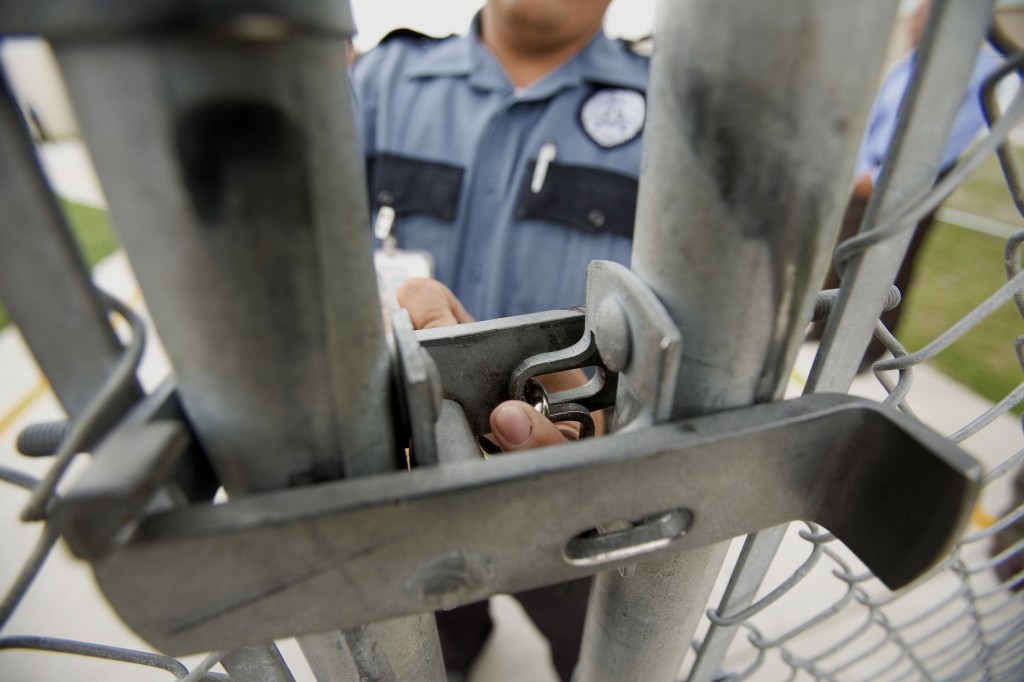(Originally posted in the Bell Gardens Sun)
Coming to the United States was a “dream come true” for Deda Makaj. Now 42, Deda fled Albania 20 years ago after enduring five years in a hard labor camp, the culmination of years of persecution he and his family suffered due to their anti-communist beliefs. He escaped to Greece in 1992 and, with the help of a charity in Athens, made it to California, where he was granted refugee protection and became a lawful permanent resident.
Over the next five years, he cobbled together his American dream, beginning with a minimum-wage job and eventually buying a dollar store. He met his wife Nadia, a refugee from Afghanistan, and they had three children.
Then a combination of bad luck and naïveté tore Deda’s American dream apart. He unwittingly bought a stolen car, and he falsified his income on a home loan application upon the encouragement of his loan officer. After serving 16 months in jail for his crimes, he was immediately placed in immigration detention in Arizona. There, he spent the next four years fighting deportation until he was finally released on bond late last year.
Deda bore witness to the human rights catastrophe that is the U.S. immigration detention system: immigrants imprisoned for months before getting a hearing and sometimes years before a decision; abuse from criminal prisoners; suicides. By the time Deda was released, his business had failed.
Amnesty International’s recent report, Jailed Without Justice, details the U.S. immigration detention system, a purgatory of legal limbo where the core American value of due process does not apply. On any given night, Immigrations and Customs Enforcement (ICE) warehouses more than 30,000 immigrants in prisons and jails—a number that has tripled in the past 12 years. Among them, surely, are immigrants who have committed deportable offenses or are undocumented—but the jailed also include large numbers of legal permanent residents, individuals seeking protection from political or religious persecution, survivors of torture and human trafficking, U.S. citizens mistakenly ensnared in immigration raids, and parents of U.S. citizen children.
Investigative news reports have exposed a litany of human rights abuses in the detention facilities, including physical violence, the use of restraints, and substandard medical care. While in detention, immigrants and asylum seekers are often unable to obtain the legal assistance necessary to prepare viable claims for adversarial and complex court proceedings. Sometimes they cannot even make a simple phone call to obtain documents that would prove they should go free. Some immigrants become so desperate at the prospect of indefinite detention that they agree to deportation despite valid claims.
Amnesty International has launched a campaign to pressure our government to honor its human rights obligations. Legislation is needed so that detention is used only as a measure of last resort, after non-custodial measures, such as reporting requirements or reasonable bond, have failed. Lawmakers who fear anti-immigrant backlash might consider the secondary benefits to honoring our moral imperative: the average cost of detaining a migrant is $95 per person/per day, while alternatives to detention cost as little as $12 per person/per day and yield up to a 99 percent success rate, according to ICE, as measured by immigrants’ appearance in immigration courts for removal hearings.
Congress should also pass legislation to ensure due process for all within our borders, including the right to a prompt individualized hearing before an immigration judge. Currently, ICE field office directors have the power to decide whether to detain someone; yet to incarcerate an individual for months, or even years, before a court makes a judgment on the individual’s case is an absurd negation of our nation’s stated commitment to the rule of law.
Finally, the U.S. government must adopt enforceable human rights standards in all detention facilities that house immigrants. These standards can only be overseen and enforced by an independent body that has the power to hold ICE accountable.
For more than a decade, the federal government has underwritten the unchecked expansion of ICE’s power. The result is a detention system riddled with inconsistencies, errors and widespread human rights violations. Tens of thousands of lives hang in the balance. The time has come for the U.S. government to apply the rule of law to those within its own borders.


